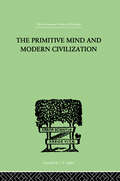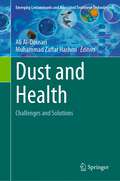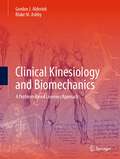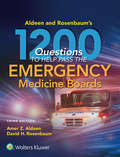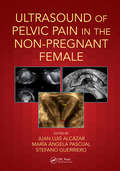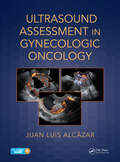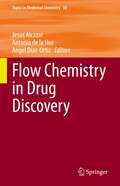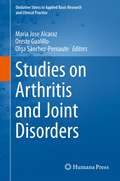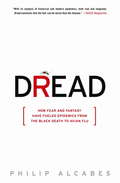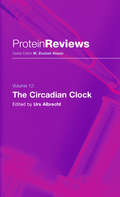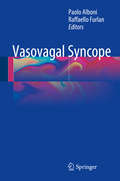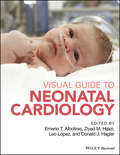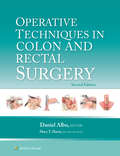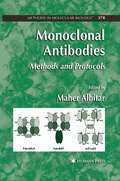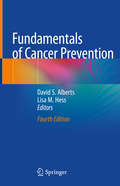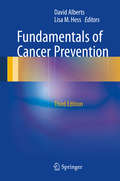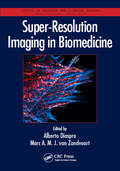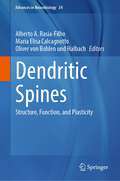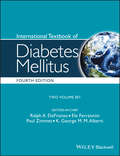- Table View
- List View
The Primitive Mind And Modern Civilization
by Aldrich, Charles RobertsFirst Published in 1999. Routledge is an imprint of Taylor & Francis, an informa company.
Dust and Health: Challenges and Solutions (Emerging Contaminants and Associated Treatment Technologies)
by Ali Al-Dousari Muhammad Zaffar HashmiThis book discusses the sources, human health hazards and risk prevention strategies associated with aeolian dust particles (fine and ultrafine) in the atmosphere. It covers the challenges of accurately forecasting aeolian dust and the need to raise public awareness on the warning signs and harmful impacts of airborne dust. Also discussed is the presence of microorganisms, heavy metals and other pollutants in dust which contributes to harmful impacts on human health as well as management and treatment options for the various health issues that can result from exposure. The book is a useful resource for scientists, engineers and policymakers interested in dust and health.
Case Studies in Global School Health Promotion: From Research to Practice
by Carmen E. Aldinger Cheryl Vince WhitmanA growing body of research identifies strong links between children's health, social and educational outcomes; it also notes the reciprocal benefits of access to quality education on individual and family health status. In response to these findings, the World Health Organization developed the concept of the Health-Promoting School (HPS), a living catalyst for healthy lives, and for positive changes that students can take home and into the community. Case Studies in Global School Health Promotion provides readers with a theoretical and research base needed to understand the methods used in communities all over the world to put this captivating concept in place. Case examples from over two dozen countries (representing urban and rural areas in developing and developed nations) outline the strategies taken to implement HPS programs in individual schools, municipalities, and nations. For each program, case study authors explain the problems they tackled, their motivation and supports to respond creatively; and the barriers they faced. In the cases, authors describe the capacities and infrastructure they created and mechanisms for cooperation; as well as the personnel, financial, and time requirements involved. Case studies were drawn from the following regions: Africa The Americas Europe Eastern Mediterranean South and Southeast Asia Western Pacific. Case Studies in Global School Health Promotion offers a world of insights, ideas, and guidance to those addressing social determinants of health at this formative stage, including: education and health policy makers; professionals and administrators; and researchers in national governments, universities, local schools, community, non-governmental organizations and civil society. The material provides interesting and useful information to those dedicated to these issues within WHO, FRESH Partners and other United Nations agencies. It is also an instructive text for graduate students in public health, education, allied health professions and social sciences.
Critical Realism for Health and Illness Research: A Practical Introduction
by Priscilla AldersonCritical realism, as a toolkit of practical ideas, helps researchers to extend and clarify their analyses. It resolves problems arising from splits between different research approaches, builds on the strengths of different methods and overcomes their individual limitations. This original text draws on international examples of health and illness research across the life course, from small studies to large trials, to show how versatile critical realism can be in validating research and connecting it to policy and practice. To meet growing demand from students and researchers, this book is based on the course at UCL, first taught by Roy Bhaskar, the founder of critical realism.
Clinical Kinesiology and Biomechanics: A Problem-Based Learning Approach
by Gordon J. Alderink Blake M. AshbyThis new textbook uses a problem-based learning (PBL) approach for teaching the fundamentals of kinesiology and biomechanics to undergraduate and graduate students in the biomedical, rehabilitative, and exercise science fields. Case vignettes and problems for each major region of the body are presented – cervical spine, thoracic spine and rib cage, lumbar spine and pelvis, shoulder girdle, elbow/forearm, wrist, hand, hip, knee, and ankle/foot. For the cases on the spine and upper extremity, biomechanics of posture are included; for cases involving the hip, knee, and ankle/foot, an extensive study of gait analysis is also incorporated. These case vignettes are not preceded by chapters that provide foundational information. Rather, relevant anatomical, biomechanical, and other information needed to solve/explain each case are embedded in the relevant chapters presenting the clinical cases.
Aldeen and Rosenbaum's 1200 Questions to Help You Pass the Emergency Medicine Boards
by Amer Aldeen David H. RosenbaumFully revised and updated based on valuable reader feedback, Aldeen and Rosenbaum's 1200 Questions to Help You Pass the Emergency Medicine Boards, Third Edition gives you the tools you need to pass the ABEM board exam on the first try. Questions are slightly more difficult than the average exam question, in order to challenge and add to your knowledge and fully prepare you for questions you’re likely to see. Every question in this Third Edition has been reviewed for quality and relevance, ensuring that this unique study tool is an ideal choice to prepare for both the in-service residency exam and the board exam in emergency medicine.
Young Clara Barton: Battlefield Nurse
by Sarah AlcottFollows the life of the nurse who served on the battlefields of the Civil War and later founded the American Red Cross.
Ultrasound of Pelvic Pain in the Non-Pregnant Patient
by Juan Luis Alcázar María Ángela Pascual Stefano GuerrieroThere are many possible causes of pelvic pain in a non-pregnant female patient, and it has been estimated to be responsible for nearly 40% of all visits by female patients to a family doctor and 10% of all referrals to specialist gynecologists. However, the topic of how to investigate and diagnose has been surprisingly neglected in print. This important and much-needed text from an internationally respected expert shows how important ultrasound can be as a tool for physicians caring for women's health.
Ultrasound Assessment in Gynecologic Oncology
by Juan Luis AlcázarThis innovative guide will help gynecologists or gynecologic surgeons to monitor the staging and progress of oncology treatment. An international expert here shows what office ultrasound can be used to achieve, how it correlates with other clinical findings, and how it can be integrated as necessary with other modalities and with the latest technological advances and developments in the field.
Flow Chemistry in Drug Discovery (Topics in Medicinal Chemistry #38)
by Jesus Alcazar Antonio de la Hoz Angel Díaz-OrtizThis book reviews the challenges and opportunities posed by flow chemistry in drug discovery, and offers a handy reference tool for medicinal chemists interested in the synthesis of biologically active compounds. Prepared by expert contributors, the respective chapters cover not only fundamental methodologies and reactions, such as the application of catalysis, especially biocatalysis and organocatalysis; and non-conventional activation techniques, from photochemistry to electrochemistry; but also the development of new process windows, processes and reactions in drug synthesis. Particular attention is given to automatization and library synthesis, which are of great importance in the pharmaceutical industry. Readers will also find coverage on selected topics of general interest, such as how flow chemistry is contributing to drug discovery R&D in developing countries, and the green character of this enabling technology, for example in the production of raw materials for the pharmaceutical industry from waste. Given its scope, the book appeals to medicinal chemistry researchers working in academia and industry alike, as well as professionals involved in scale-up and drug development.
Studies on Arthritis and Joint Disorders
by Maria Jose Alcaraz Olga Sánchez-Pernaute Oreste GualilloThis next volume in our established series proposes to systematically review the basic science and clinical knowledge of the role of free radicals and antioxidants, collectively known as "oxidative stress", in the pathology of arthritis and other joint diseases. It will describe the most current diagnostic tools , laboratory methods and technology, to suggest ways of prevention and treatment and to emphasize the concept of the bench-to-bedside approach. The book will also provide specific coverage on emerging technology and medical applications including discussions of biomarkers and antioxidants as therapeutic agents and several more relevant aspects. In addition, the book will promote the concept of using biomarkers representative of oxidative stress reactions and free radical damage , as well as describe the effect of antioxidants in treating disease in clinical trials. The content will be valuable to researchers studying the development of arthritis/joint disease, and clinicians treating patients with these diagnoses.
Dread: How Fear and Fantasy Have Fueled Epidemics from the Black Death to Avian Flu
by Philip AlcabesThe average individual is far more likely to die in a car accident than from a communicable disease...yet we are still much more fearful of the epidemic. Even at our most level-headed, the thought of an epidemic can inspire terror. As Philip Alcabes persuasively argues in Dread, our anxieties about epidemics are created not so much by the germ or microbe in question-or the actual risks of contagion-but by the unknown, the undesirable, and the misunderstood. Alcabes examines epidemics through history to show how they reflect the particular social and cultural anxieties of their times. From Typhoid Mary to bioterrorism, as new outbreaks are unleashed or imagined, new fears surface, new enemies are born, and new behaviors emerge. Dread dissects the fascinating story of the imagined epidemic: the one that we think is happening, or might happen; the one that disguises moral judgments and political agendas, the one that ultimately expresses our deepest fears.
The Circadian Clock
by Urs AlbrechtThe purpose of this volume is to provide historical and current information about the circadian clock, molecular properties of clock components and their roles in health and disease. The Circadian Clock aims to give an integrated view how the biochemistry and physiology of an organism is organized over the 24 hours of a day and how disturbance of clock function can lead to disease. Outline: - Historical overview - Transcriptional Regulation of circadian clocks - Non-Image Forming Photoreception - Interplay Between Circadian Clocks and Metabolism - Clocks, Cell Cycle and Cancer - Circadian Neural Networks - Circadian Neural Networks - Circadian Clocks and Sleep a) Clocks and Sleep in animals b) Homeostatic and Circadian Regulation of Human Sleep - Clocks, Brain Function and Dysfunction - Systems Biology and Modeling of Circadian Rhythms - Comparative Clocks.
Vasovagal Syncope
by Paolo Alboni Raffaello FurlanThis book is exceptional in being devoted solely to vasovagal syncope (VVS), the most frequent cause of transient loss of consciousness in the general population. All aspects of VVS are covered, including epidemiology, pathophysiology, diagnosis and differential diagnosis, prognosis, therapy and implications for particular activities such as work, driving and physical activity. The context for the book is that about half of the population suffer from this type of loss of consciousness during their lifetime and then often call for general practitioner and/or emergency room assistance. While many pathophysiological aspects of VVS have been clarified, others remain elusive. The diagnosis of VVS may be easy, but it is sometimes challenging. From the therapeutic standpoint, few evidence-based therapies have been established and the large majority of treatments remain unsatisfactory. Vasovagal Syncope presents the latest evidence on all these issues and will be of value for internists, cardiologists, neurologists, emergency physicians and general practitioners.
Visual Guide to Neonatal Cardiology
by Ernerio T. Alboliras Ziyad M. Hijazi Cecilio Leo Lopez Donald J. HaglerThe Visual Guide to Neonatal Cardiology is a comprehensive, highly illustrated, reference covering the evaluation, diagnosis and management of cardiac disease in the newborn. <p><p> Contains over 900 color illustrations, including patient photographs, chest roentgenograms, electrocardiograms, echocardiograms, angiocardiograms, 3D computed tomogramphy, magnetic resonance imaging, pathologic specimens, and other relevant visual aids <p> Discusses the natural history of fetal heart disease and the rationale, indications, technique, and impact of fetal cardiac intervention <p> Reviews the anatomy and physiology of the neonatal cardiovascular system, including differences within the fetal, transitional, neonatal, child and adult circulatory system <p> Highlights key steps for taking a patient history, including detailed discussion of the cardiac examination (inspection, palpation and auscultation of heart sounds and murmurs) <p> Presents over 35 morphologic conditions with sections covering introduction, epidemiology, etiology with accepted or postulated embryogenesis, pathophysiology, clinical presentation, physical examination findings, diagnostic evaluation, management, and prognosis <p> Includes a neonatal formulary reviewing selected medications currently used for treatment of perioperative low cardiac output, congestive heart failure, pulmonary hypertension, sedation, pain and anticoagulation in neonates
Operative Techniques in Colon and Rectal Surgery
by Daniel Albo Mary T. HawnWith an emphasis on the “hows and whys” of contemporary surgery,Operative Techniques in Colon and Rectal Surgery, Second Edition, features concise, bulleted text, full-color illustrations, and intraoperative photographs to clarify exactly what to look for and how to proceed. Drawn from the larger Operative Techniques in Surgery, Second Edition, this concise, stand-alone surgical atlas, overseen by editor-in-chief Mary T. Hawn and meticulously edited by Dr. Daniel Albo, focuses on the steps of each technique, rapidly directing you to the information you need to choose the right approach for each patient, perform it successfully, and achieve the best possible results.
Monoclonal Antibodies
by Maher AlbitarThis book examines a collection of state-of-the-art methods that employ monoclonal antibodies in a clinical setting. The chapters offer in-depth description for generating mouse and recombinant humanized antibodies, and a comprehensive review of how antibodies are being used in bead-based methods for measuring proteins. This field will continue to expand and provide new and innovative techniques in the laboratory and as a basis that complements targeted therapy.
Anxious Politics
by Bethany Albertson Gadarian Shana KushnerEmotions matter in politics - enthusiastic supporters return politicians to office, angry citizens march in the streets, a fearful public demands protection from the government. Anxious Politics explores the emotional life of politics, with particular emphasis on how political anxieties affect public life. When the world is scary, when politics is passionate, when the citizenry is anxious, does this politics resemble politics under more serene conditions? If politicians use threatening appeals to persuade citizens, how does the public respond? Anxious Politics argues that political anxiety triggers engagement in politics in ways that are potentially both promising and damaging for democracy. Using four substantive policy areas (public health, immigration, terrorism, and climate change), the book seeks to demonstrate that anxiety affects how we consume political news, who we trust, and what politics we support. Anxiety about politics triggers coping strategies in the political world, where these strategies are often shaped by partisan agendas.
Fundamentals of Cancer Prevention
by David S. Alberts Lisa M. HessThis authoritative work, now in its fourth edition, presents state of the art knowledge on all key aspects of cancer prevention. In addition to detailed summaries on preventive strategies for specific cancers, readers will find current knowledge on a range of relevant scientific topics including the benefits of cancer prevention, the importance of diet and physical activity, innate and adaptive immune responses to cancer, hereditary risks, cancer health disparities, and the preventive role of telemedicine. In this new edition of the book, the coverage has been expanded to include additional disease sites and to provide up-to-date information across the range of disciplines in the field of cancer prevention and control. Written as a collaborative work by internationally recognized leaders in the field, Fundamentals of Cancer Prevention is an essential reference guide and tool for oncologists, primary care physicians, the research community, and students with an interest in reducing the burden of cancer through the implementation of effective preventive strategies.
Fundamentals of Cancer Prevention
by David Alberts Lisa M. HessThis authoritative work is an essential reference guide and tool for oncologists, primary care physicians, the research community, and students with an interest in reducing the burden of cancer. Written as a collaborative work by nationally recognized leaders in the field of cancer prevention and control, the third edition provides readers with new information related to recent developments in the field. The scope of this edition has been expanded to include topics related to global health and to provide readers with novel insights into the expanding disciplines within cancer prevention and control.
Super-Resolution Imaging in Biomedicine (Series in Cellular and Clinical Imaging)
by Alberto Diaspro and Marc A. M. J. van ZandvoortThis book encompasses the full breadth of the super-resolution imaging field, representing modern techniques that exceed the traditional diffraction limit, thereby opening up new applications in biomedicine. It shows readers how to use the new tools to increase resolution in sub-nanometer-scale images of living cells and tissue, which leads to new information about molecules, pathways and dynamics. The book highlights the advantages and disadvantages of the techniques, and gives state-of-the-art examples of applications using microscopes currently available on the market. It covers key techniques such as stimulated emission depletion (STED), structured illumination microscopy (SSIM), photoactivated localization microscopy (PALM), and stochastic optical reconstruction microscopy (STORM). It will be a useful reference for biomedical researchers who want to work with super-resolution imaging, learn the proper technique for their application, and simultaneously obtain a solid footing in other techniques.
Dendritic Spines: Structure, Function, and Plasticity (Advances in Neurobiology #34)
by Alberto A. Rasia-Filho Maria Elisa Calcagnotto Oliver von Bohlen und HalbachThis reference provides detailed coverage of dendritic spines, the fascinating neuronal components that modulate synaptic transmission, development, strength, and plasticity and are involved in the function of multiple areas of the nervous system. The density, shape, and function of spines may indicate the cellular connectivity and synaptic plasticity in normal and pathological conditions. This field has undergone dramatic advances in terms of techniques and experimental findings from in vitro to in vivo data, from animal models to human neurons, and computational models using artificial intelligence. To address these cutting-edge findings, the book provides state-of-the-art, comprehensive coverage with chapters written by the leading international researchers in the field. The authors consider the multiple implications for the study of dendritic spines with broad implications in the neurosciences and related areas.
Decluttered: Mindful Organizing for Health, Home, and Beyond
by Jenny AlbertiniHave you ever wondered why you can't summon the energy to declutter those piles of clothes on the floor? Do you wish you knew what policies your workplace could offer so everyone can think more clearly and feel better at work? Or maybe you've felt confused about which ideas even deserve your attention right now? You're not alone. And if you are ready for a change, this book is for you.Coming from a public health expert who spent over two decades designing health initiatives around the world, Decluttered is a mindful exploration of how and why clutter manifests in our lives–and what we can do about it. Jenny Albertini invites readers to explore decluttering from personal and empathetic angles while acknowledging how clutter does not only manifest as "stuff" in our homes, but also in our relationships and in our everyday lives. Blending stories and science with writing prompts and creativity exercises, this book will motivate readers to examine their relationship to their surroundings while reducing clutter for their health, in their homes, in their workplaces, and beyond. Jenny shares her own transformative journey of working in clinics in Africa and training under Marie Kondo, along with inspirational moments with clients from her years as professional organizer. Decluttered will leave its readers feeling: • Enlightened about underlying health issues related to clutter; • Aware of what to prioritize for their decluttering journey; and • Ready to take tangible steps that improve their work lives, home environments, and relationships.A refreshing addition to the well-being and home genres, Decluttered helps to reduce shame and supports readers to transform their cluttered lives and spaces into foundations for healthy, balanced and intentional living.Welcome to your world, decluttered.
International Textbook of Diabetes Mellitus
by George Alberti P. Zimmet E. Ferrannini R. A. DefronzoThe International Textbook of Diabetes Mellitus has been a successful, well-respected medical textbook for almost 20 years, over 3 editions. Encyclopaedic and international in scope, the textbook covers all aspects of diabetes ensuring a truly multidisciplinary and global approach. Sections covered include epidemiology, diagnosis, pathogenesis, management and complications of diabetes and public health issues worldwide. It incorporates a vast amount of new data regarding the scientific understanding and clinical management of this disease, with each new edition always reflecting the substantial advances in the field. Whereas other diabetes textbooks are primarily clinical with less focus on the basic science behind diabetes, ITDM's primary philosophy has always been to comprehensively cover the basic science of metabolism, linking this closely to the pathophysiology and clinical aspects of the disease. Edited by four world-famous diabetes specialists, the book is divided into 13 sections, each section edited by a section editor of major international prominence. As well as covering all aspects of diabetes, from epidemiology and pathophysiology to the management of the condition and the complications that arise, this fourth edition also includes two new sections on NAFLD, NASH and non-traditional associations with diabetes, and clinical trial evidence in diabetes. This fourth edition of an internationally recognised textbook will once again provide all those involved in diabetes research and development, as well as diabetes specialists with the most comprehensive scientific reference book on diabetes available.
